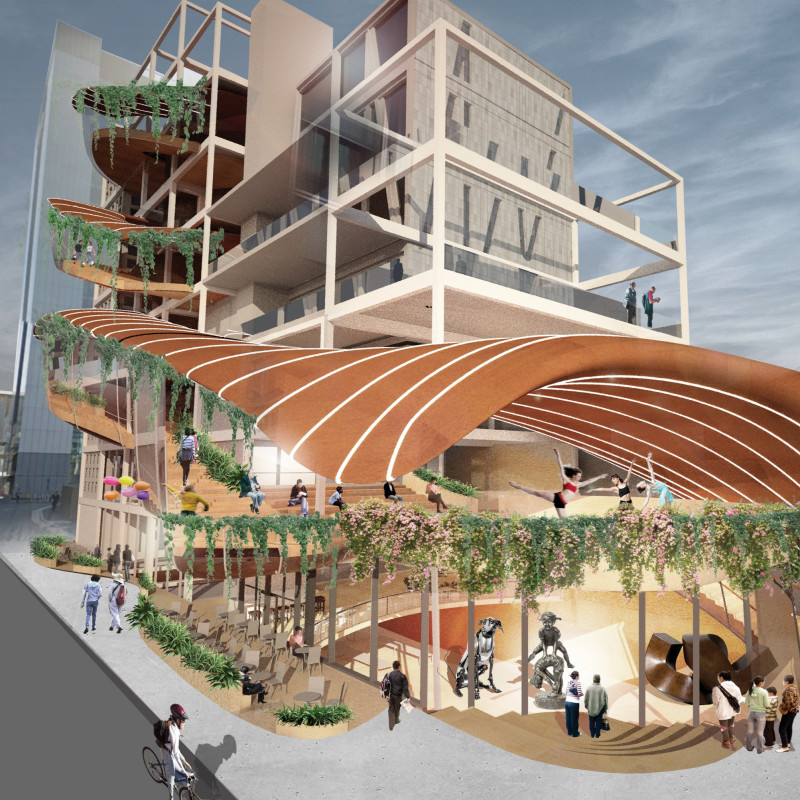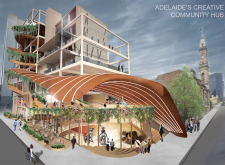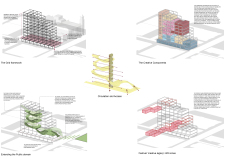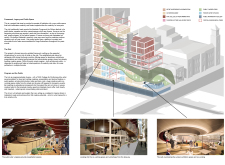5 key facts about this project
At the heart of this architectural endeavor lies a clear understanding of its function. The design accommodates both public and private activities, featuring flexible spaces that can adapt to various uses. This versatility is essential in promoting a sense of inclusivity and encouraging diverse community interactions. The layout is meticulously planned, allowing for both open areas conducive to gatherings and quieter nooks for reflection or one-on-one discussions.
Materiality is a key aspect of this project, with a curated selection that embodies both resilience and aesthetic grace. The primary materials include reinforced concrete, glass, steel, and timber, each chosen for their respective properties and contributions to the overall design ethos. The use of reinforced concrete provides the necessary structural integrity while allowing for expansive open spaces. Glass elements are thoughtfully integrated, ensuring ample natural light penetrates the interior while offering visual connections to the exterior landscape. The contrasts of the sleek steel framework with the warmth of timber detail foster a sense of balance within the overall composition.
The project’s unique approaches to design are evident in its innovative spatial organization and environmental considerations. The architectural layout promotes flow and connectivity, establishing a strong relationship between indoor and outdoor environments. Large overhangs and terraces not only enhance the aesthetic appeal but also serve as functional extensions of the interior spaces, encouraging usage in various weather conditions. This attention to outdoor integration reverberates throughout the design, fostering a connection with nature that is both calming and inspiring.
Another distinctive element within this architectural project is its attention to sustainability. The design incorporates green technologies and materials that enhance energy efficiency, further connecting the project with its environmental responsibilities. Features such as green roofs, rainwater harvesting systems, and solar panels underline the commitment to sustainability and offer long-term benefits for both the users and the surrounding ecosystem.
Additionally, the project incorporates localized cultural references into its design language, drawing inspiration from the historical context of its geographical location. This rootedness creates a dialogue between the contemporary architecture and its historical surroundings, adding layers of meaning to the overall experience of the space. The intention here is not only to respect the area’s heritage but to provide a modern interpretation that resonates with today’s cultural values.
The careful coordination of these elements results in a fully realized architectural expression that is inviting and functional. As visitors engage with the various spaces, they encounter thoughtfully designed rooms that accommodate diverse activities, ensuring that every corner of the project serves a purpose. The interior design further enhances these experiences, featuring finishes that reflect both the functional requirements of the space and an overarching aesthetic narrative.
For those interested in a deeper understanding of this project and its architectural details, the exploration of architectural plans, architectural sections, and architectural designs will provide valuable insights. Each element of the design is crafted to tell a story, and reviewing these aspects can reveal insights into the architectural ideas that underpin this compelling project. By delving into these materials, readers can appreciate the careful thought and innovation embedded in the architecture, showcasing its ability to adapt to the evolving needs of the community it serves.


























